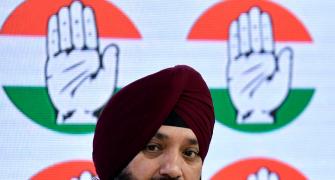Use credit cards with discretion and try to generate a net monthly surplus to avoid falling into a debt trap

Banks are increasingly focussing on loans to individuals as credit demand from corporates has slowed. This has resulted in an unprecedented growth in personal loans and credit card outstanding year-on-year.
Personal loans grew 27 per cent annually between August 2015 and 2016, according to data from Reserve Bank of India. Between August 2014 and 2015 growth was 20 per cent, and a mere nine per cent a year before that.
Credit card outstanding has also risen. The annual outstanding on credit cards between August 2015 and 2016 grew 26.8 per cent. Between 2014 and 2015 it was 21.3 per cent and 18.1 per cent a year before that.
“Individuals are borrowing more for their discretionary spends. Some segments where we have seen loan traction are travel, consumer durables and luxury goods,” says Manavjeet Singh, founder and chief executive officer, Rubique. He was also head of retail banking at YES Bank earlier. Singh says individuals these days prefer instant gratification over saving and spending later. “Loan is no longer a bad word and many are comfortable with equated monthly instalments (EMIs),” he says.
But he also points out that there has been an increase in individuals taking loans to repay credit card outstanding. Of these, there are many who used a credit card for the first time. They realise the cost involved (high interest rates) once the outstanding grows to a level they are unable to repay.
The most common reason for build-up of credit is that borrowers make only partial payment or pay only the minimum to avoid late payment charges. The balance then gets added to the next bill and the combined amount attracts extremely high interest, more than 40 per cent annually.
If a person has an outstanding loan of Rs 2 lakh and pays only the minimum due of five per cent every month, it will take more than 35 years to repay the entire outstanding.
The debt trap begins when individuals spend more than what they earn. Then they revolve outstanding credit on their cards until it starts pinching them. That’s when they start looking for alternative such as personal loans, converting outstanding into EMIs and balance transfers if they have more than one card. While these have a lower interest rate compared to a credit card, the borrower still has to shell out 14-20 per cent as interest a year. “Many of these borrowers don’t realise that they could be walking into a debt trap. If such borrowers meet an emergency, they are usually not able to repay,” says Malhar Majumder, a certified financial planner.
The only approach to avoid getting into such a trap is to generate a net monthly surplus. “Irrespective of the amount, if a person manages to save a small amount every month net of the debt outstanding, it would help manage finances better,” says Majunder. And rather than relying on cards for emergencies, one should slowly build a contingency fund to help during emergencies.
Illustration: Uttam Ghosh/Rediff.com








